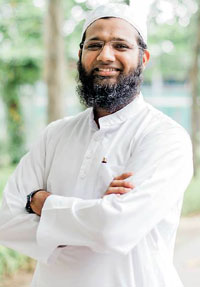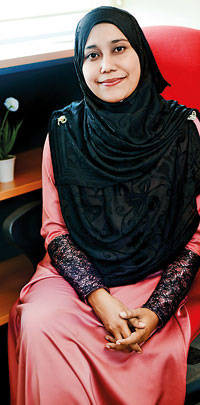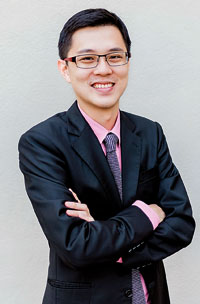Medical or supernatural: Breaking stigma linked to epilepsy
View(s):
Dr Mohd. Farooq Shaikh
To interpret one’s convulsions as a definitive sign of paranormal interference, maybe catastrophic – a big mistake. For centuries, ignorance and human inexperience on this occurrence have been a subject of puzzlement and a source of fear.
Epilepsy has been viewed as a form of a mysterious supernatural trance. Such views and questions, whether it’s of divine origin or possession by a demonic entity, were bothersome even up to the mid-20th century. Some research institutions say that epilepsy exists in two parallel worlds – one of the scientific advancements, and the other, a darker world of superstition and prejudice. Director of UCSF-Epilepsy Centre Dr Danial Lowenstein calls it “The Sacred Disease”.
Researchers of Monash University Malaysia, Dr Mohd. Farooq Shaikh, Dr Aiedah Khalek and Dr Tan Meng Yoe seem to concur with the idea that epilepsy is none more sacred or divine than any other disease. For centuries, this disease has been carrying a deep-rooted dividing stigma on the sufferers. The three of them have teamed up to explore the possibility of engaging religious institutions as a means to raise awareness and provide education. The overall aim of this project is to reduce the level of discrimination against the affected individuals.
Being a neuroscientist, Dr Farooq is appalled at how epilepsy is represented in Malaysian society. He said, “In the case of epilepsy, every religion has some pockets of misinformation that causes them to discriminate against patients. What we are trying to do together is to use religious platforms to bring renewal to this mindset positively.”
Dr Farooq acknowledges that religion is culturally embedded in the lives of most Malaysians. Therefore, any information disseminated by religious leaders and institutions is prone to be accepted without question. Unfortunately so, people can misconstrue these messages, and stigmatise individuals who suffer from the likes of epilepsy or HIV. According to him, this happens where there have been influences from inaccurate and prejudiced sources, who nail their own elicit belief, thus misinterpreting those messages.
There are said to be more than 50 million people worldwide who live with epilepsy. They have little to no control over their body, as the behaviour and duration of an epileptic seizure are unpredictable. Injuries to the brain at birth, certain genetic abnormalities, trauma from a blow to the head, or lasting damage from a stroke or infection may cause some cases of epilepsy. Still, for the rest, the causes for this seizure are unknown.

Dr Aiedah
The sad part of all this is that patients of this chronic disorder, viewed as a mark of disgrace, not only face discrimination imposed on them by society for a ‘shame’ they have and cannot control, but have come to view and accept themselves as social outcasts. According to Canadian Sociologist Dr Erving Goffman (NCBI), stigma is defined as an attribute that has the potential to discredit an individual, which results in the tainting of his/her social identity. The stigma on patients with epilepsy places them at a higher risk of depression, social isolation, anxiety, low quality of life and other illnesses pertaining to low self-esteem. Many are unable to find suitable employment or even get married.
Dr Aiedah, an expert in Islamic religion and society study, feels this is a real community issue that must be addressed. She said, “Epilepsy is widely known as Sawan babi, which translates to pig seizures in the Malaysian national language. The name itself imposes a negative connotation and labelling, which is part of the stigma. Some are spontaneous to imply epilepsy as demonic possession. They strongly believe it can only be treated using a religious approach. These beliefs and practices may deter the vulnerable group from seeking medical treatment.”
“Based on previous studies and our observation in the community, we hypothetically believe that society, in general, has a significant level of trust in their religious institutions. These institutions could work together with the health experts to shedding light on this matter. It helps to know that nowadays, they are more open to educating society on many issues, including health,” she explained.
When asked about how she plans to handle rejection or backlash to their efforts, Dr Aiedah pointed out that as their team consists of researchers from multidisciplinary backgrounds – religion, medical science, and communication – they would find a way to bridge the gap and handle rejection amicably.
Dr Tan, who is an expert in communication and online religion, said that one of the commonalities shared by the three researchers is that they each consider themselves religious individuals and recognise that spiritual leaders are very influential. “Even in topics of health and sickness, it’s possible that Malaysian communities trust their spiritual leaders much more than they trust the medical experts. That’s one of the things we are exploring. If proven true, the next step would be to see if it is more effective to use the existing platform of religious institutions to provide medical education and combat stigmatisation,” he said.

Dr Tan Meng Yoe
“We are not trying to debunk religious rituals or beliefs. We are hoping to provide additional and accurate information to these institutions, leaders, and communities, empowering them with a broader scope of understanding of stigmatised diseases,” Dr Tan added.
This project recently received a research grant from the Global Asia in the 21st Century (GA21) research platform in the university and is estimated to take a year to complete. Dr Farooq, Dr Aiedah and Dr Tan hope to use the data obtained to diffuse negative perception and infuse accurate information to both religious leaders and communities. It could be via workshops and seminars with all groups at large, or through extensive use of media content, such as videos and infographics through public online platforms, like YouTube and social media channels.
The team hopes that religious leaders will be provided with a basic understanding of various stigmatised diseases, to educate their congregations. With their respective fields of expertise, this collaboration has a singular goal – to create a paradigm shift and reduce or even eliminate any form of stigma on these patients.


